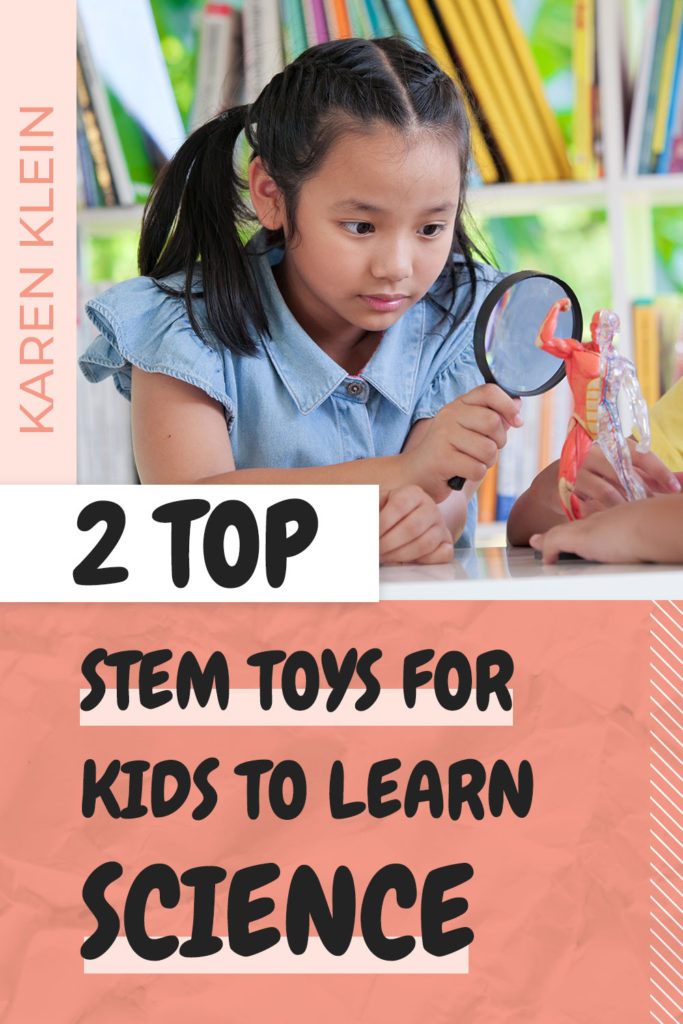
“We should not teach children the sciences but give them a taste for them”.
Jean Jacques Rosseau
Today I wish to talk about a category of toys “Science toys” that is many times part of a greater category called STEAM category (that stands for Science, Technology, Engineering, the Arts and Math.)
There are plenty of options when you look for science for kids in the market, from games and toys to free experiments online. Some major companies in this market include Fatbrain Toys, 4M, ThinkFun, National Geographic, Learning Resources and many more; but the one I personally experienced and wish to introduce today is Smartlab!
Based in USA, the company was bought by Quarto Group who also develops information-rich and stimulating books and products for adults, children and the whole family.
The Smartlab products come usually with a booklet explaining the experiment and providing plenty of content and explanations enlarging the value in the toy and making the science for kids experience much deeper.
Why should we buy science toys if we can go online or youtube and find so many for free?
I like these kinds of toys because all is included. You do not need to find missing parts at home or alter with something else, taking the chance it will not work. Plenty of experts at Smartlab thought, planned and put the kits together, tried them, so EVERYTHING is in the box.
Secondly, children tend to open boxes and are more excited when receiving a gift rather than looking for science for kids experiments online (unless your child is really into science on his own)
I believe we, parents, should encourage this type of play as the experiment requires a number of steps to follow, carefully understand each step. The child learns to try and sometimes makes mistakes and tries again until it works. This is a very important skill to learn today, perseverance, as we live in an “instant moment”- fast and now! The process of making and then getting results is crucial for our kids, learning not to give up until I get the results I want.
Empowering them to pour, mix, build– leaves them in charge, in control and this also enhances their self-esteem.
Moreover, science toys for kids encourage curiosity which is another crucial skill to develop in our children.
(source: youaremom) Curiosity about a subject makes it much easier to learn, retain and assimilate information about it. The expectation generated by curiosity motivates the brain to assimilate knowledge better because:
- It activates dopamine, which is a chemical messenger or neurotransmitter to achieve objectives. It also promotes the retention of information.
- Curiosity provides benefits for the hippo-campus, which is one of the brain’s centers. The hippo-campus is fundamental for the formation and consolidation of both long and short-term memory.
- The tandem or reward system facilitates learning and the reception of information.
Here are 6 main benefits of curiosity (from Greater Good Magazine -science-based insights for a meaningful life):
Curiosity has been linked with psychological, emotional, social, and even health benefits. Here are six of them!
- Curiosity helps us survive.The urge to explore and seek noveltyhelps us remain vigilant and gain knowledge about our constantly changing environment, which may be why our brains evolved to release dopamine and other feel-good chemicals when we encounter new things.
- Curious people are happier.Research has showncuriosity to be associated with higher levels of positive emotions, lower levels of anxiety, more satisfaction with life, and greater psychological well-being. Of course, it may be, at least partially, that people who are already happier tend to be more curious, but since novelty makes us feel good, it seems likely that it goes the other direction as well.
- Curiosity boosts achievement.Studies reveal that curiosity leads to more enjoyment and participationin school and higher academic achievement, as well as greater learning, engagement, and performance at work. It may seem like common sense, but when we are more curious about and interested in what we are doing, it’s easier to get involved, put effort in, and do well.
- Curiosity can expand our empathy.When we are curious about others and talk to people outside our usual social circle, we become better able to understandthose with lives, experiences, and worldviews different than our own.
- Curiosity helps strengthen relationships.One studyasked strangers to pose and answer personal questions, a process scientists call “reciprocal self-disclosure.” They found that people were rated as warmer and more attractive if they showed real curiosity in the exchange (while other variables like the person’s social anxiety and their levels of positive and negative emotions did not affect the partner’s feelings of attraction and closeness). This implies that demonstrating curiosity towards someone is a great way to build your closeness with them.
- Curiosity improves healthcare.Research suggeststhat when doctors are genuinely curious about their patients’ perspectives, both doctors and patients report less anger and frustration and make better decisions, ultimately increasing the effectiveness of treatment.
So I am happy to recommend 2 of the science toys I myself experienced with my children:
SmartLab Toys Aftershock Earthquake Lab Set (53 Piece)
“This is the perfect kit for the kid who likes to build things and then destroy them. A wonderful introduction to engineering and geology. ”
More info provided by Betsy Henry Pringle, senior editor of SmartLab Toys:
“The product designer and I have wanted to make a shake table for a long time, probably because we live on the West Coast.
We took our first prototype to the team at the Pacific Northwest Seismic Network at the University of Washington. Their shake tables only moved from side-to-side, so they were very excited that ours also included the up-and-down movement that occurs in some quakes!
As a former teacher, it was important to me that the book presented earthquakes as part of Earth’s natural processes.
We created a couple of fictional scientists who study earthquakes and then design buildings to withstand them (hoping to inspire some young engineers!). The kit lets kids do the same thing.
We veered away from disaster scenarios and scary images, focusing instead on experiments that show kids ways to construct strong buildings, while still allowing them the fun of shaking them to pieces!
The shake table is great because it allows kids to create all types of seismic events: rolling waves, sharp drops, up-and-down jolts, as well as combination waves. I’ve never seen another shake table that features all these different types of earthquake waves.
One of the most interesting things I learned while creating the book was that tall buildings, like skyscrapers, are more affected by long, slow seismic waves, whereas smaller buildings, like houses, are more damaged by short, frequent waves. We included an experiment that shows this. It can be a little tricky to get right—but it works!
I hope kids will come up with their own experiments, maybe decorate the interior rooms, add little “people,” and make their own little disaster movies—it’s really fun to watch the buildings collapse in slow motion!”
Smart Lab You Explore It: Human Body Model
“A toy that lets kids hold a lifelike heart in their hands! Squishy Human Body educates and engages with irresistibly squishy pieces and facts galore! “
Additional info provided by Betsy Henry Pringle, senior editor of SmartLab Toys:
“Before our Squishy Human Body kit, all of the “Visible Man” type of anatomy kits were hard plastic. We wanted kids to get the feel of real human organs. Of course, the coiled-up squishy intestines that pull out are the best part!
Following a slice of pizza as it moves through the body gave us a great visual way to show how the organs work together.”
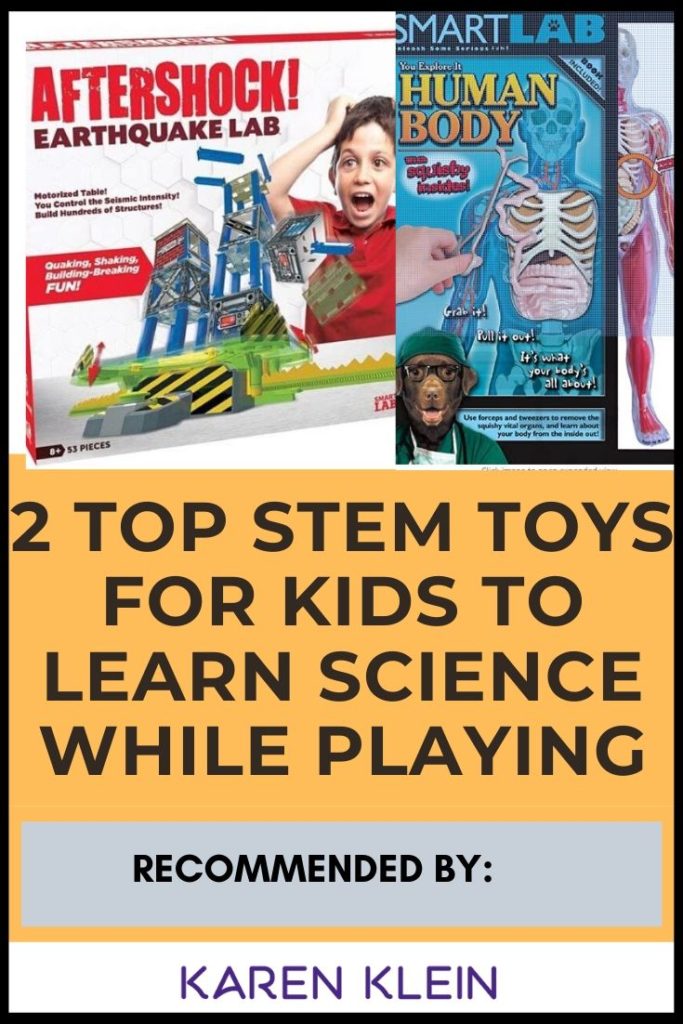
This page contains affiliate links meaning I may earn a commission if you use them. I only recommend products I use and honestly trust. For more info read the full disclosure.
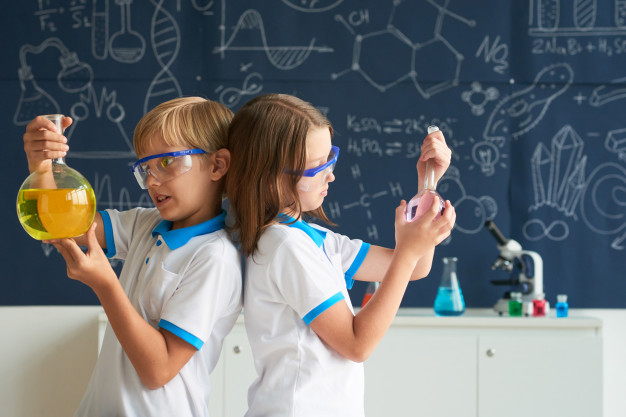
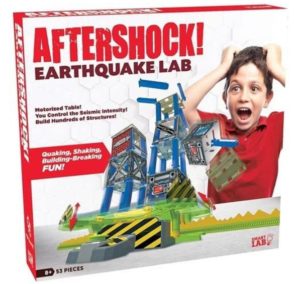
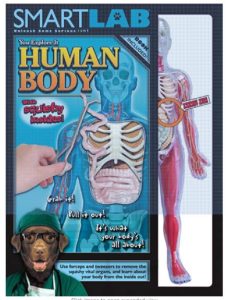



Wow! Impressive sets for curious kids! Thanks for the cool ideas!